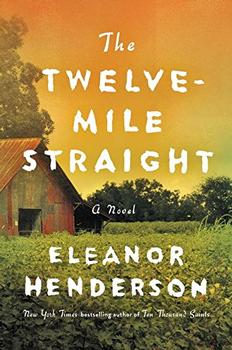Summary | Excerpt | Reading Guide | Discuss | Reviews | Beyond the Book | Read-Alikes | Genres & Themes | Author Bio

A Novel
by Eleanor HendersonThis article relates to The Twelve-Mile Straight
The major characters in The Twelve-Mile Straight grew up as sharecroppers.
Merriam-Webster defines a sharecropper as "a tenant farmer…who is provided with credit for seed, tools, living quarters, and food, who works the land, and who receives an agreed share of the value of the crop minus charges." While farming methods similar to sharecropping have been used around the world for millennia, the concept of the tenant farmer became especially prevalent in the United States during the post-Civil War era known as Reconstruction (1863-1867) and through the first half of the 20th century.
During the last few months of the Civil War, Union General William T. Sherman issued what was known as "Field Order Number 15," a plan granting each family of freed slaves "forty acres and a mule," with the land coming from territory formerly held by Georgia plantation owners. The policy was later rolled back, with President Andrew Johnson ordering all land returned to its original owners, forcing the African Americans on the acreage in question to either agree to work it for the owner or be forcibly evicted. Left with few options, many stayed and became employed by the landowners – who were also in a bind because while they owned the land they had no workforce and limited funds. While some of the former slaves were given wages in exchange for their labor, most preferred to rent small plots of land from the owners, often paying with a share of the crops they produced (hence the name). The landlords in return were expected to provide food, shelter, seed, fertilizer and tools.
 Sharecropping spread across the South in the ensuing decades. By 1880, over 30% of Georgia's farms were operated by tenant farmers, a number which grew to 37% by 1910.
Sharecropping spread across the South in the ensuing decades. By 1880, over 30% of Georgia's farms were operated by tenant farmers, a number which grew to 37% by 1910.
Sharecropping gave African Americans a certain measure of freedom and indeed some were able to rise above the system to improve their family's lot in life. More frequently, however, the system worked against sharecroppers. According to PBS, "High interest rates, unpredictable harvests, and unscrupulous landlords and merchants often kept tenant farm families severely indebted, requiring the debt to be carried over until the next year or the next. Laws favoring landowners made it difficult or even illegal for sharecroppers to sell their crops to others besides their landlord, or prevented sharecroppers from moving if they were indebted to their landlord."
As the American South continued to struggle economically after the war, an increasing number of Caucasians also fell into poverty, and by the 1920s about two-thirds of US sharecroppers were white. During the Great Depression, the Southern Tenant Farmers' Union was formed to lobby for better working conditions and more rights for sharecroppers – both black and white (it was one of the few unions open to both races at the time).
Sharecropping gradually died out in the United States by the middle of the 20th century. The rise of factories in large cities in the northern states drew poor laborers away from the farms, and more efficient and less expensive methods of planting and harvesting crops reduced the manpower necessary to turn a profit. Consolidation of small farms into large corporate endeavors also helped to make the practice of sharecropping obsolete.
by Kim Kovacs
Sharecroppers pose in a Bulloch County tobacco field in 1949. Courtesy of Georgia Archives, Vanishing Georgia Collection
Filed under People, Eras & Events
![]() This "beyond the book article" relates to The Twelve-Mile Straight. It originally ran in September 2017 and has been updated for the
September 2018 paperback edition.
Go to magazine.
This "beyond the book article" relates to The Twelve-Mile Straight. It originally ran in September 2017 and has been updated for the
September 2018 paperback edition.
Go to magazine.
Your guide toexceptional books
BookBrowse seeks out and recommends the best in contemporary fiction and nonfiction—books that not only engage and entertain but also deepen our understanding of ourselves and the world around us.